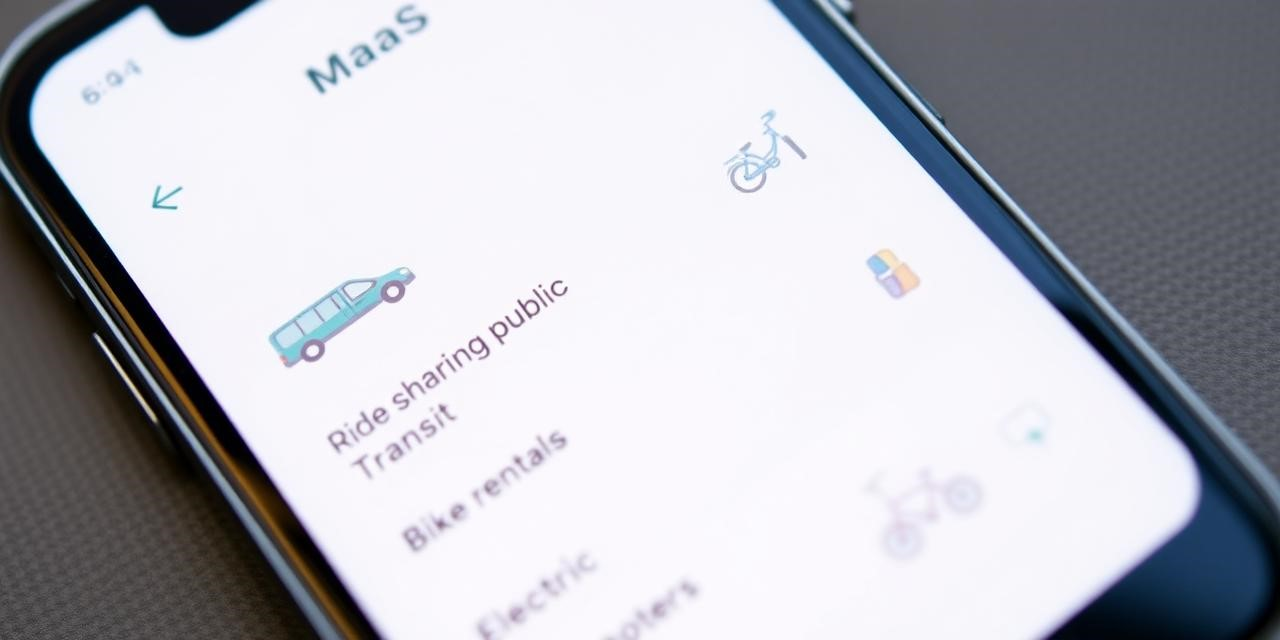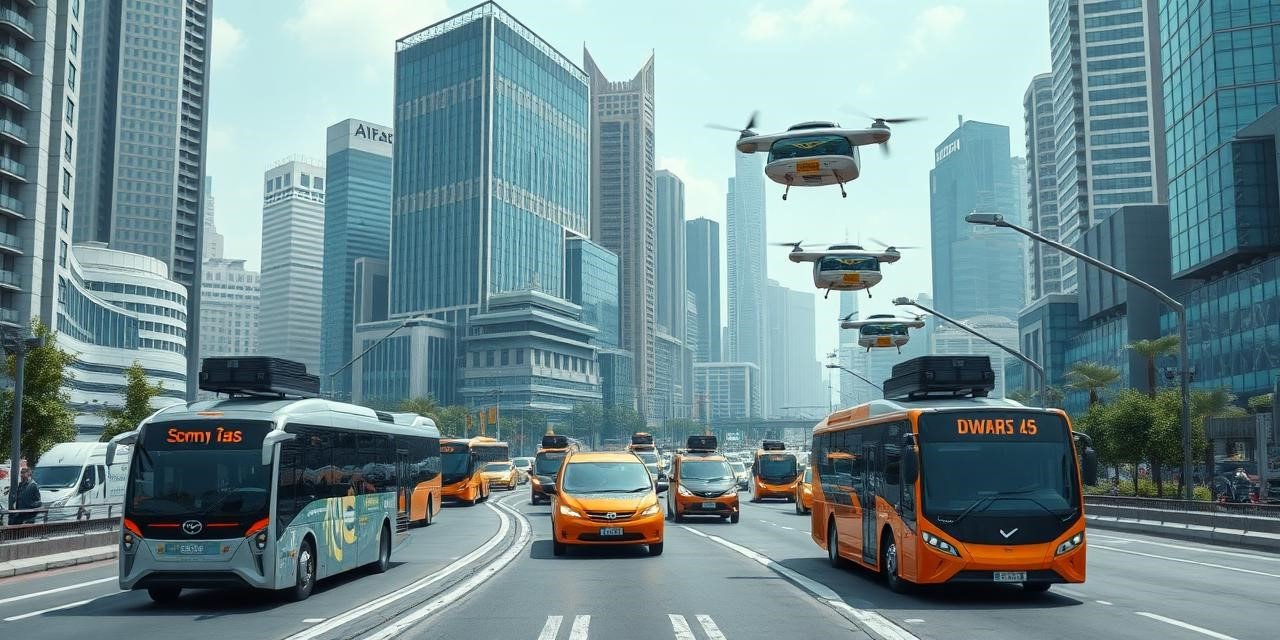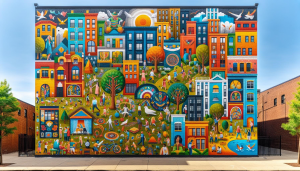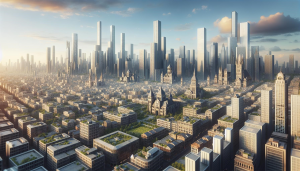For years, I’ve been buried in the trenches of urban design, battling the daily grind that defines city life: the soul-crushing traffic, the sardine-can buses, the infuriating inefficiency of simply getting around. It’s made me a bit obsessed with how new tech could totally revamp our cities. Forget baby steps; we’re talking a seismic shift in how we move. Electric vehicles, self-driving systems, and a bunch of other innovations are promising a future where getting around is actually efficient, sustainable, and, dare I say, enjoyable. So, buckle up, let’s dive in.
The Urban Mobility Mess: Why Can’t We Get This Right?
Before we all start dreaming of flying cars (though… keep reading), let’s be real about the problems we’re trying to fix. Traffic jams are a massive drain on cities, costing us billions in lost productivity and wasted gas. Public transit? Essential, sure, but often overcrowded and about as reliable as a teenager’s promises. And then there’s the environmental elephant in the room: transportation’s huge contribution to pollution. These are the headaches the next wave of mobility solutions are trying to cure.
Goodbye Car Ownership, Hello Mobility-as-a-Service (MaaS)
MaaS is one of the most game-changing ideas out there.

Imagine ditching car ownership altogether and just accessing whatever ride you need through one single app, paying only for what you use. Think Netflix, but for getting around. MaaS platforms pull together everything – buses, ride-sharing, bikes, scooters – into one smooth experience. It makes travel planning a breeze and nudges people towards greener choices. For city planners, it’s a powerful tool to manage traffic and squeeze more efficiency out of existing infrastructure. The secret sauce? Easy access and integration that makes ditching your car actually appealing.
Smart Cities: Data is the Driver
The future of getting around is fueled by data. Smart city tech uses data to optimize transportation in real-time. Think sensors buried in roads, vehicles, and infrastructure constantly feeding info about traffic, travel patterns, and even the weather. All that data gets crunched to find bottlenecks, predict demand, and fine-tune routes. Imagine traffic lights that react to changing traffic, or bus routes that adapt to where people actually are. It’s all about creating a system that’s smarter and more responsive.
Electric Vehicles: Is This the End of Gas Guzzlers?
EVs are set to be rockstars in the future of city travel. Batteries are getting better, charging stations are popping up everywhere, and EVs are getting cheaper. The benefits are clear: zero tailpipe emissions mean cleaner air. Plus, EVs are quieter and, honestly, more fun to drive. Cities are throwing incentives at people to switch – tax breaks, rebates, prime parking spots. Of course, there are hurdles. We need tons more charging stations, and we need to deal with the environmental impact of making and recycling those batteries.
Autonomous Vehicles: Buckle Up for the Driverless Revolution
Self-driving cars, buses, and trucks promise a total shakeup.
Micro-Mobility: Solving the “Last Mile” Puzzle
E-scooters and bike-sharing are filling a crucial gap: the “last mile” problem. These zippy little vehicles are a cheap and easy way to bridge the gap between public transport and your final stop. Micro-mobility has exploded in popularity, changing how people zip around town. But, all those scooters have also raised some eyebrows – sidewalk clutter, reckless riders, and vandalism. Cities are responding with designated parking, speed limits, and helmet laws. If managed well, micro-mobility can be a game-changer for sustainable transport.
Air Taxis and Drones: Taking to the Skies
Looking way ahead, air taxis and delivery drones could transform how we move people and packages. Air taxis – think vertical takeoff and landing aircraft – could offer a super-fast way to hop across the city, skipping the traffic jams below. Delivery drones could bring packages straight to your door in minutes.
5G: The Invisible Infrastructure That Makes It All Work
All these cool innovations need one thing: rock-solid connectivity. 5G, with its blazing speeds and super-low lag, will be the backbone of future urban mobility. It’ll allow self-driving cars to talk to each other and to infrastructure in real-time, boosting safety and efficiency. It’ll also seamlessly connect different modes of transport, making it easier to plan journeys. As cities become more connected, 5G will be essential for building smart and sustainable transport systems.
Sustainability: Keeping Our Eyes on the Prize
As we embrace these new technologies, we have to prioritize sustainability. The future of urban mobility must be green, fair, and economically sound. We need to power EVs with renewable energy, make sure self-driving cars are accessible to everyone, and integrate micro-mobility responsibly. By thinking holistically about sustainability, we can create systems that benefit both people and the planet.
The Future is Now: How Our Cities Will Change
The future of urban mobility is about more than just tech; it’s about rethinking how we design our cities. As new ways to get around emerge, we’ll need to reimagine our streets, parking spaces, and public areas. We might see a shift away from car-centric design towards spaces that are friendlier to pedestrians and cyclists. We might even see parking garages turned into housing, offices, or parks. Integrating these new solutions will require teamwork between city planners, transportation experts, politicians, and the public. By working together, we can build cities that are more livable, sustainable, and accessible for everyone.


